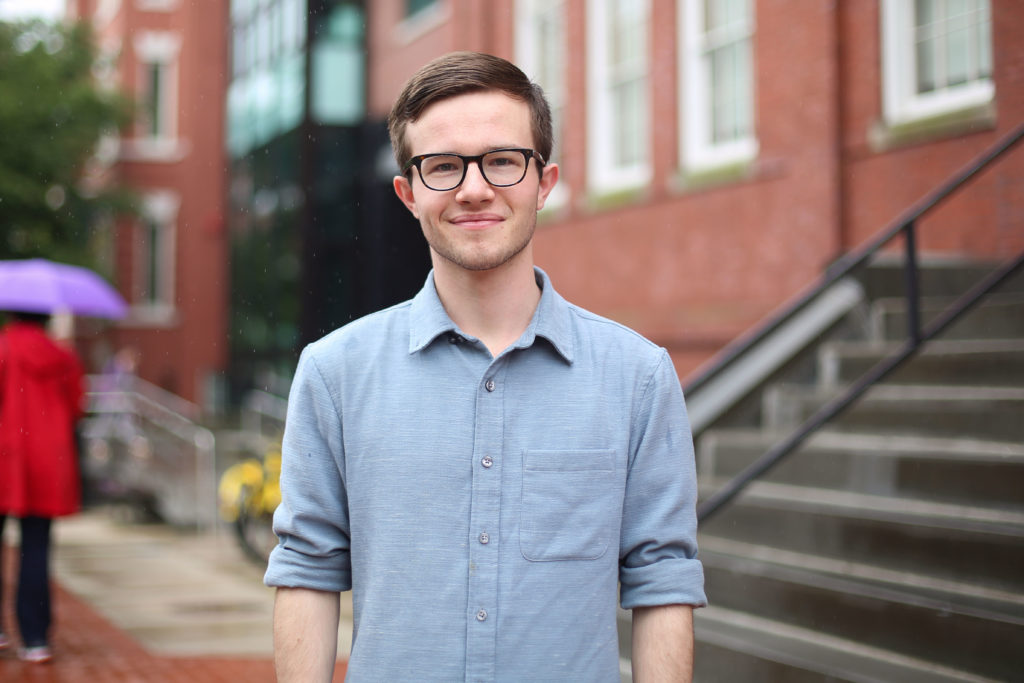One on-campus intersection complies with federal accessibility standards, an interactive map a local leader compiled last week shows.
James Harnett, a Foggy Bottom and West End Advisory Neighborhood Commissioner and senior, said he evaluated each of the neighborhood’s intersections to determine whether they met D.C. and Federal Highway and Transportation Commission standards. The intersection at 22nd and I streets – the only intersection on campus that meets the standards – is equipped with both a ramp and an audio signal.
Twenty-four of Foggy Bottom and West End’s 105 intersections meet accessibility standards, according to the map.
District Department of Transportation Director Jeff Marootian said officials are working toward a “long-term” goal to upgrade each intersection to align with the Americans with Disabilities Act standards and upgrade intersections in areas with significant construction.
He said DDOT is currently working on a plan to rebuild intersections with accessible features on Pennsylvania Avenue running from 17th to 21st streets.
“It’s important to note that, while the intersections identified do not have accessible pedestrian signals, all intersections do have ADA ramps,” Marootian said in an email.
Marootian said the intersection at 23rd Street and Washington Circle, which is marked as inaccessible on the map, complies with ADA standards. He said each intersection requires different accessibility features depending on the intersection’s design.
“Aside from these standard traffic signal features, full ADA compliance at a traffic signal consists of two main components: 1) ADA compliant ramps with detectible warning surface, and 2) accessible pedestrian signals,” Marootian said.
He said the crosswalk at 19th and H street does not have a signal but complies with guidelines for unsignalized intersections, and DDOT is working to make the crossing ADA accessible.
Marootian said officials have prioritized upgrading intersections about which community members have voiced accessibility concerns.
“This benefits residents, visitors and commuters that utilize the District’s streets on a daily basis,” he said. “This allows DDOT to direct our resources to locations where the features are needed most.”
Harnett said he compiled the map after the Student Association released its first comprehensive accessibility report, which revealed more than 60 physically inaccessible locations on campus, late last month. He said he plans to use the map to urge DDOT to outfit intersections in the Foggy Bottom and West End areas with accessible features.
“The number of intersections that are actually fully accessible in the neighborhood is well below where it should be,” Harnett said.
He said the majority of accessible intersections in the area are in areas with construction, like at K Street and Pennsylvania and Constitution avenues.
“That’s where the primary hotspots of accessible intersections are because not only do they receive a high volume of foot traffic, but also warrant a bit more when it comes to projects to to retrofit and enhance those intersections,” Harnett said.
He added that he plans to introduce the map at next week’s ANC meeting.
“I’m planning on sending the map and report on all of these intersections to DDOT to get them to prioritize fully accessibilizing these intersections,” he said. “And for the intersections that are partially accessible, making sure that the requisite changes are made to make it fully compliant with the standards that exist.”
Gabriela Rossner, the president of the Disabled Students Collective, said students using wheelchairs found the crosswalk on H Street that connected the Marvin Center to Lisner Auditorium difficult to use because the crossing does not include a ramp.
She added that several visually impaired or blind students have trouble navigating on-campus intersections that lack audio signals.
“The big issue with that is looking at this map, if you’re visually impaired or blind, when you rely on an auditory signal from a crosswalk to tell you when to cross, there is no way to get across campus without the help of a sighted guide,” Rossner said.





